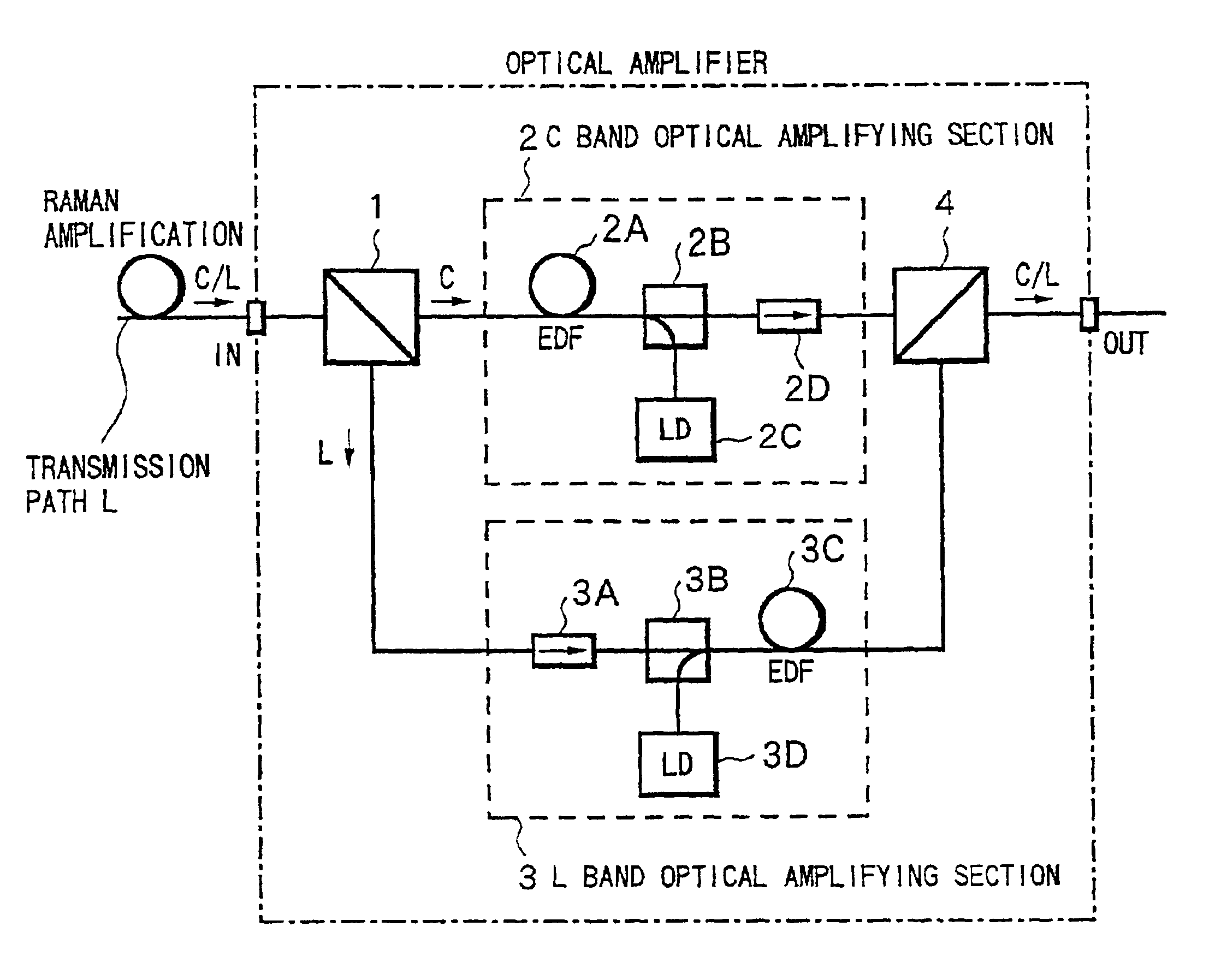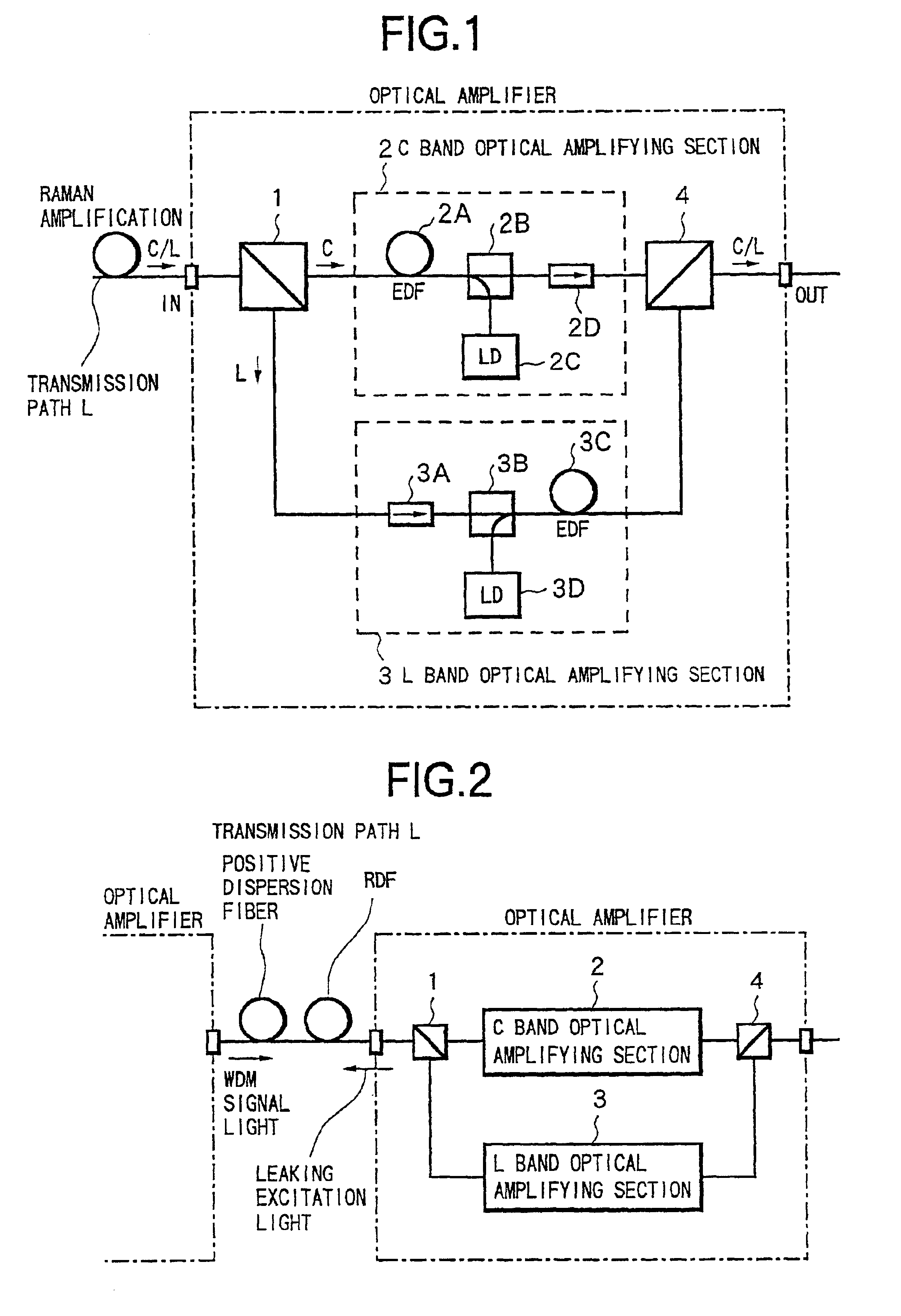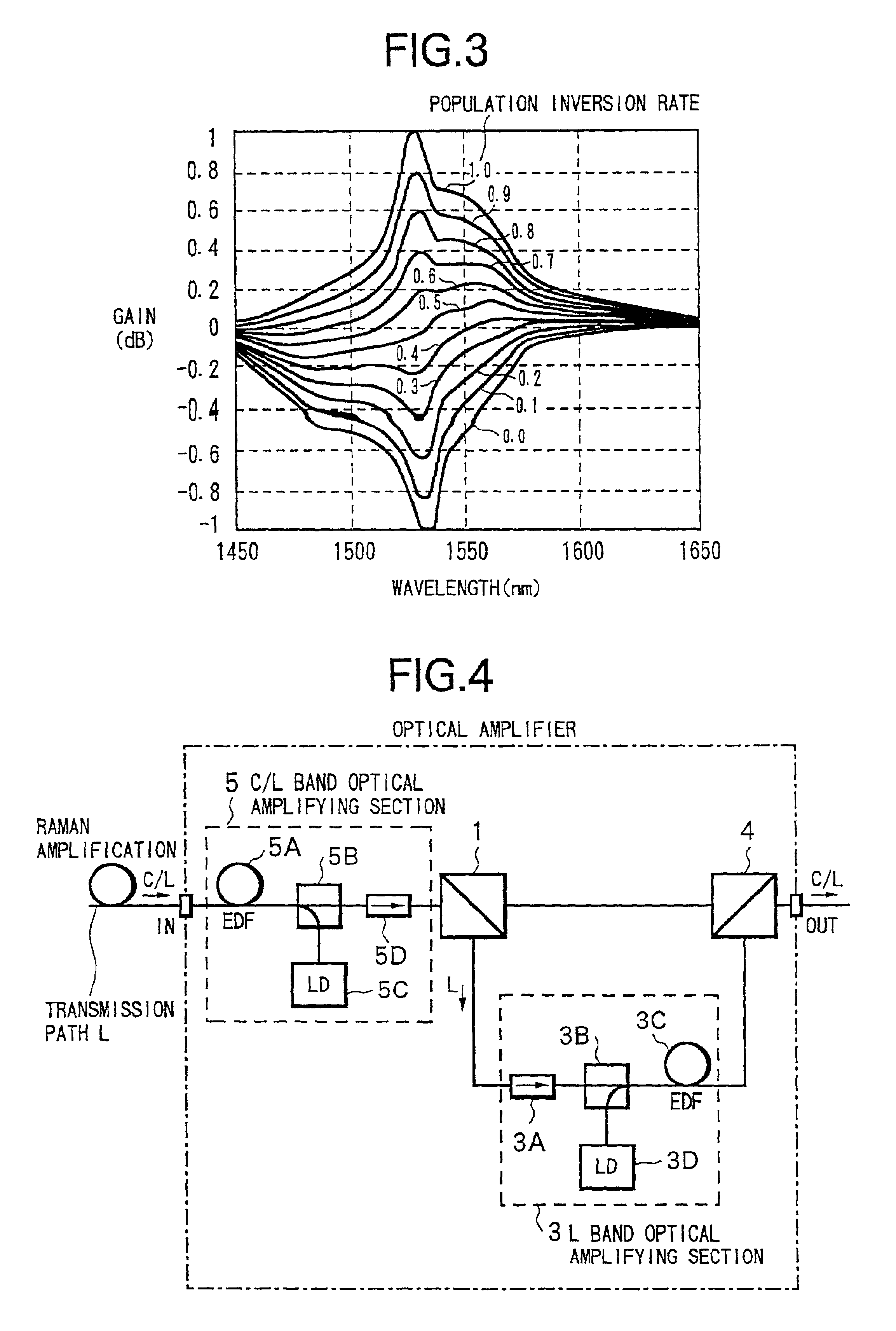Optical amplifier
a technology of optical amplifier and optical signal, which is applied in the direction of electromagnetic repeaters, instruments, and active medium materials, can solve the problems of loss portion, noise figure deterioration, and loss ratio of optical signal of l band compared to optical signal of c band, and achieve the effect of reducing the relative optical sn ratio of one wavelength band and simple construction
- Summary
- Abstract
- Description
- Claims
- Application Information
AI Technical Summary
Benefits of technology
Problems solved by technology
Method used
Image
Examples
first embodiment
[0048]FIG. 1 is a block diagram showing a basic construction of an optical amplifier according to a
[0049]In FIG. 1, the present optical amplifier has a demultiplexer 1 serving as a demultiplexing device for demultiplexing WDM signal light input from an external transmission path L via a terminal IN, into a C band optical signal and an L band optical signal, a C band optical amplifying section 2 serving as a first optical amplifying section for amplifying the C band optical signals which have been demultiplexed by the demultiplexer 1, an L band optical amplifying section 3 serving as a second optical amplifying section for amplifying the L band optical signals which have been demultiplexed by the demultiplexer 1, and a multiplexer 4 serving as a multiplexing device for multiplexing optical signals which have been respectively amplified by the C band optical amplifying section 2 and the L band optical amplifying section 3, and outputting these to the outside via a terminal OUT.
[0050]H...
second embodiment
[0071]Next is a description of the present invention.
[0072]FIG. 4 is a diagram showing a basic construction of an optical amplifier according to the second embodiment Parts of the same construction as for the first embodiment are denoted by the same reference numerals. The same applies for the subsequent figures.
[0073]In FIG. 4, the optical amplifier has a C / L band optical amplifying section 5 as a pre-stage amplification section for amplifying WDM signal light input from an external transmission path L via a terminal IN, a demultiplexer 1 for demultiplexing optical signals which have been amplified by the C / L band optical amplifying section 5 into a C band optical signal and an L band optical signal, an L band optical amplifying section 3 for amplifying L band optical signals which have been demultiplexed by the demultiplexer 1, and a multiplexer 4 for multiplexing the C band optical signals which have been demultiplexed by the demultiplexer 1, and the L band optical signals which ...
third embodiment
[0081]Next is a description of the present invention.
[0082]With the third embodiment, the case is considered where for example in the second embodiment described above, compensation for the wavelength dispersion and dispersion slope, or compensation for the gain wavelength characteristics can be executed inside the optical amplifier.
[0083]FIG. 5 shows a structural example of an optical amplifier according to the third embodiment.
[0084]In FIG. 5, the construction of the present optical amplifier is such that compensation optical devices 6C and 6L are respectively provided on the light transmission paths corresponding to the respective bands, between the demultiplexer 1 and the multiplexer 4. Here, the compensation optical device 6C corresponding to the C band is inserted between the demultiplexer 1 and the multiplexer 4, while the compensating optical device 6L corresponding to the L band is inserted between the L band optical amplifying section 3 and the multiplexer 4. The insertion...
PUM
| Property | Measurement | Unit |
|---|---|---|
| wavelength | aaaaa | aaaaa |
| wavelength | aaaaa | aaaaa |
| wavelength | aaaaa | aaaaa |
Abstract
Description
Claims
Application Information
 Login to View More
Login to View More - R&D
- Intellectual Property
- Life Sciences
- Materials
- Tech Scout
- Unparalleled Data Quality
- Higher Quality Content
- 60% Fewer Hallucinations
Browse by: Latest US Patents, China's latest patents, Technical Efficacy Thesaurus, Application Domain, Technology Topic, Popular Technical Reports.
© 2025 PatSnap. All rights reserved.Legal|Privacy policy|Modern Slavery Act Transparency Statement|Sitemap|About US| Contact US: help@patsnap.com



